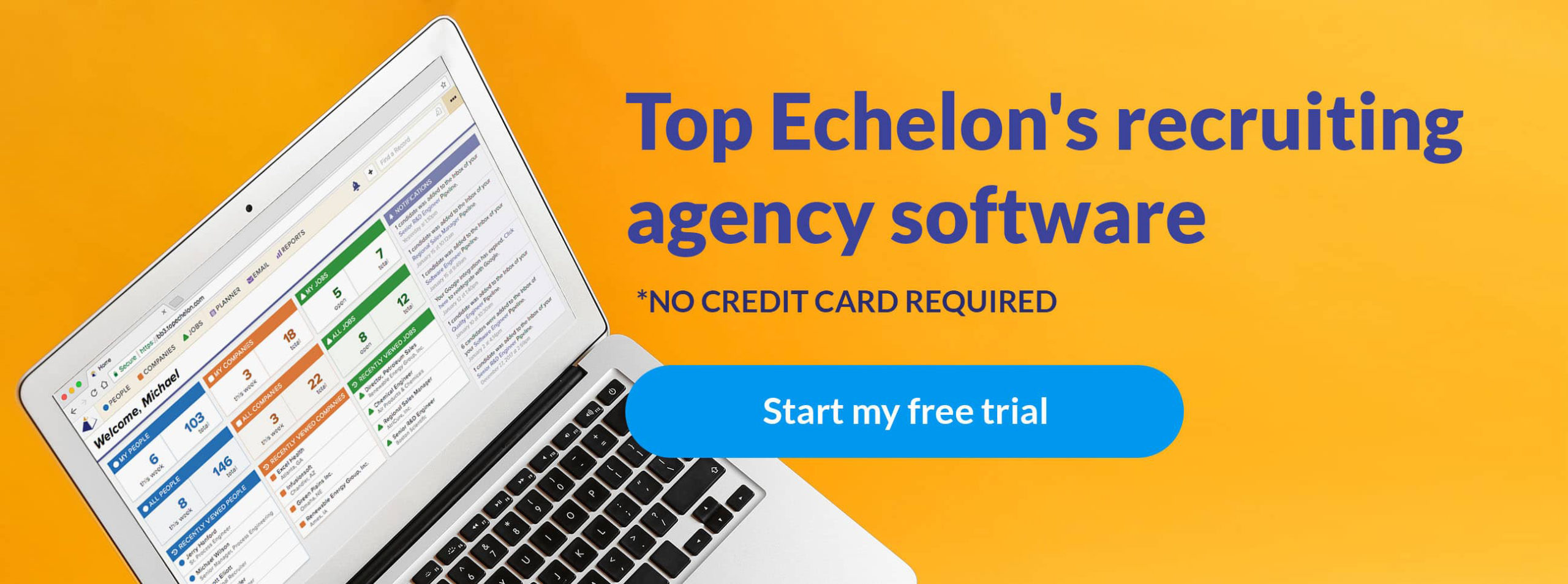If you’ve been a recruiter for any length of time, then you know about systems. You know how the creation and streamlining of systems can help you to make more placements and increase your recruiting fees. Enter the recruitment management system. (You thought I was going to say, “Enter the dragon,” didn’t you? Pysch.)
As most of you are well aware, technology has had a profound effect on the recruiting industry during the last several decades. That technology has influenced workforce trends and offered new and exciting opportunities for creating a recruitment system to increase production and billings.
One of the names for this kind of system is a recruitment management system. It goes by other names, as well, including e-recruitment or an online recruitment system. All three refer to basically the same thing: a series of tools that facilitates the placement and recruiting process.
Don’t wait to improve your recruiting process and bill more money! Try the Big Biller software for recruitment agencies today, and put more money in your pocket!
In other words, better recruitment management means more qualified candidates, more send-outs, and more placements. C’mon, who doesn’t like the sound of THAT?
What is recruitment management?
Recruitment management is the management of the core functions and duties of the recruiting and selection process. That process includes, but is not limited to, the sourcing, selecting, and hiring of qualified candidates for an organization’s open positions, regardless of whether those positions are direct hire or temporary in nature.
But let’s dig down a little further, shall we? Managing a recruiting system means the management of the following five steps, among other things:
- Sourcing, finding, and/or identifying viable candidates
- Attracting those candidates to your employment opportunity
- Interviewing the candidates that you attract, either over the phone, in person, or both
- Assessing those candidates
- Hiring the candidates as new employees
Among the series of tools that comprise a recruitment management system is recruiting software. The right software can help to save time and streamline the process. As a result, each of the five steps listed above happens more quickly. That means clients can see qualified candidates, interview them, and hire them more quickly.
And as we know, in the game of recruiting, speed makes all the difference.
Okay, so now let’s get down to the nitty-gritty. We just listed five of the main steps involved, but how should you go about managing those steps? (Not to mention the other steps that are involved in the process?) What are the components of an effective recruitment management system?
We’re glad you asked because we have the answers to these questions!
5 components of an online recruitment management system
Below are the five main components of an online recruitment management system, along with the role that your recruitment software package plays in each one:
#1—Sourcing talent
Where do you find your best candidates? How do you find your best candidates? They could already be in your own recruiting database, or you might find them on LinkedIn. If they are on LinkedIn, how do you get them into your recruiting software database? If they’re somewhere else, how do you get them in there? Your talent management and recruitment software should make it easy to add data.
#2—Attracting talent
This is where your firm’s website intersects recruitment human resource management. That’s because you can post your open positions on your website through a job board integration and then advertise those positions, including through social media channels (like, once again, LinkedIn). And your recruiting software? Well, it should be connected to the job posting board on your website, so that the information can flow easily from point A to point B. Get the point?
#3—Screening talent
What is recruitment management system’s role in screening candidate experience?
What is ATS (an applicant tracking system) going to accomplish for you? Looking through resumes, determining appropriate backgrounds and experience, analyzing skills, and setting up and executing phone interviews. These are all things you should be able to accomplish through ATS that is built into your recruiting software. Not only that, but you should also be able to accomplish these things quickly. Because the recruiter that presents the right candidate first wins the prize—the placement prize, that is.
#4—Submitting talent
Does your applicant tracking software provide you with an easy and customizable recruitment and talent management system for moving candidates through the placement process? Does it have Hotlists and a Pipeline for ranking candidates and positioning them correctly? By this time, the front-runners should be emerging. There should be no question in your mind which candidates deserve to be presented to your client for consideration. We’re nearing the end of the process, and this is NOT the time for flub-ups.
#5—Placing talent
A recruitment management system is all about having the correct information at the right time, just when you need it. Nowhere is this more obvious than at the end of the process. You have candidates in play in your recruiting CRM. They’re interviewing with your clients. Offers are being made and considered. You can’t afford for things to “fall through the cracks.” Do you really want to lose a $20,000 placement fee because your recruitment process management — or specifically, your recruiting software package—dropped the ball? (If that happened, then you might go “all Office Space” on your software. Bad things, man. Bad things.
Recruitment management system software
Recruiting management does not have to be difficult. And there’s no reason to make the recruiting profession tougher than it already is. After all, aren’t candidates and clients doing enough to make it tough on a daily basis?
The key is to research and select a recruitment management system software that fits your agency the best. You want a software that works the way that YOU work. You want a software that almost acts like it is an extension of what you do every day. (But not one that can become self-aware. That’s going a bit too far.)
Do you have a recruitment candidate management system in place that covers all five of the components listed above? Is your recruiting software an integral part of that process, or is it slowing the process down?
It’s plain and simple, really: you need to find the best candidates, you need to recruit the best candidates, and you need to present the best candidates. If you don’t, then there is NO way you can place the best candidates.
A top-notch recruitment management system is the way to go—especially if a top-notch recruiter software is part of that system.









